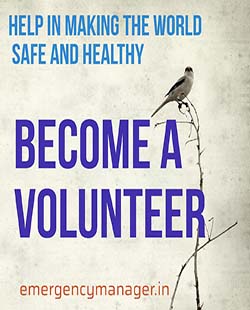

 89
89

Are Hill towns of Himalayas safe ? was the main question before more than 200 disaster management experts and government officials participating in the two days regional workshop on disaster management challenges in hill towns of Himalaya.
Two days regional workshop on the challenges of disaster risk reduction in hill towns of North Western Himalaya concluded in Shimla, Himachal Pradesh today.Shri Jai Ram Thakur,Chief Minister of Himachal Pradesh, has inaugurated it on 22nd October.
Disaster management experts and government officials of Himachal Pradesh, Uttrakhand, union territory of Jammu & Kashmir and Laddakh along with various stake holders like ITBP,BRO, PWD, etc participated in it.
Experts participating in this two days workshop painted a very gloomy picture of existing conditions.Unsafe construction practices,disconnect between disaster management experts and civil authorities,lack of communication infrastructure,lack of early warning system,lack of compliance of building by laws etc indicated that hill towns of Himalayas are not safe.
The hill towns of Himalaya are prone to various hazards both natural hazards such as earthquakes, landslides, flash floods, snow storms and avalanches, droughts etc. and man-made hazards like dam failures, fires, accidents, besides biological, industrial and hazardous chemicals etc.

Total four sessions were conducted in this workshop.
First session focused on Hazard vulnerability and risk assessment. Dr A Ganju ,Ex Director,SASE was the Chairperson and Dr DP Kanungo , CBRI , Roorkee was the Co- Chairperson of this session. Papers on issues like Seismic Hazard & vulnerability , landslid mitigation,avalanche mitigation of western Himalaya region were presented in this session.
Second session was focused upon improving compliance with building bylaws in hill towns. Prof Ravi Sinha, IIT Mumbai, and Mr Ravinesh Kumar,Financial Advisor,NDMA, conducted this session as Chairperson and Co-Chairperson respectively.
Third session discussed the issue of disaster mitigation and preparedness.Prof CVR Murthy, IIT, Madras and Mr Rug Ved Thakur,District Magistrate,Mandi coordinated it as Chairperson and Co-Chairperson respectively.Papers on climate change projections and adaptations;early warning system;low cost landslide detection system and seismic risk mitigation and retrofitting were discussed in this session.
Fourth session discussed the issue of improvement of disaster response and recovery.It was conducted by Dr K.J. Ramesh ,Ex Director General, IMD, and Dr Deepak Kumar Pandey,Sector Commandant,ITBP as Chairperson and Co-Chairperson respectively.
Papers on Flash flood of Kedarnath-2013; case study of Kashmir flood of 2014;case study of Leh flash flood of 2010; GLOF (Glacial Lake Outburst Flood) management at South Lokan,Sikkim; institutionalization of IRS of Uttrakhand and flood disaster simulation modeling were presented.
During the discussion issue of retrofitting of buildings got high focus as a practical solution to unsafe structures in hill towns.Many experts paid emphasis on need to establish effective early warning system for flood,landslide,avalanche and earthquake.
Many Himalayan states have passed laws and guidelines for safe construction practices,however,their implementation on ground is mostly missing.
A very important issue of identification of conflict of interest between disaster management authority and local community was discussed by Prof Mahua Mukherjee.It is a real factor which decides the fate of successful implementation of disaster management regulations and efforts.
Mr Kamal Kishor,Member,NDMA, played a crucial role in this workshop and highlighted several important issues pertaining to policy making and role of NDMA.Mr D.C. Rana ,Director-Special Secretary, SDMA ,Mr S.S. Randhawa,senior scientist, HIMCOSTE,Mr Vivek Sharma,Consultant DM,SDMA and other officials of SDMA played very important role in successful conduct of this workshop of national importance.
..... .... Login with Google and support us